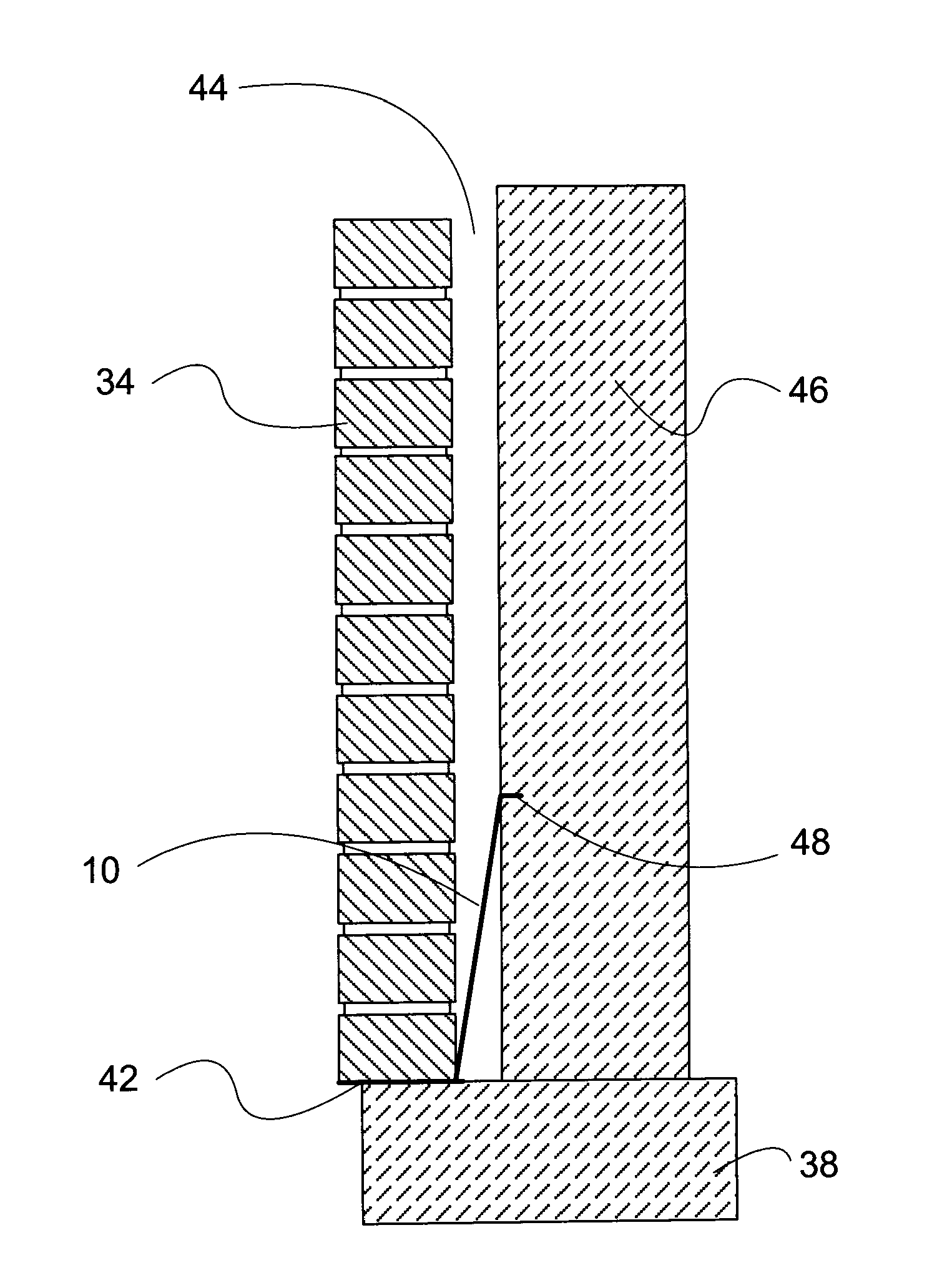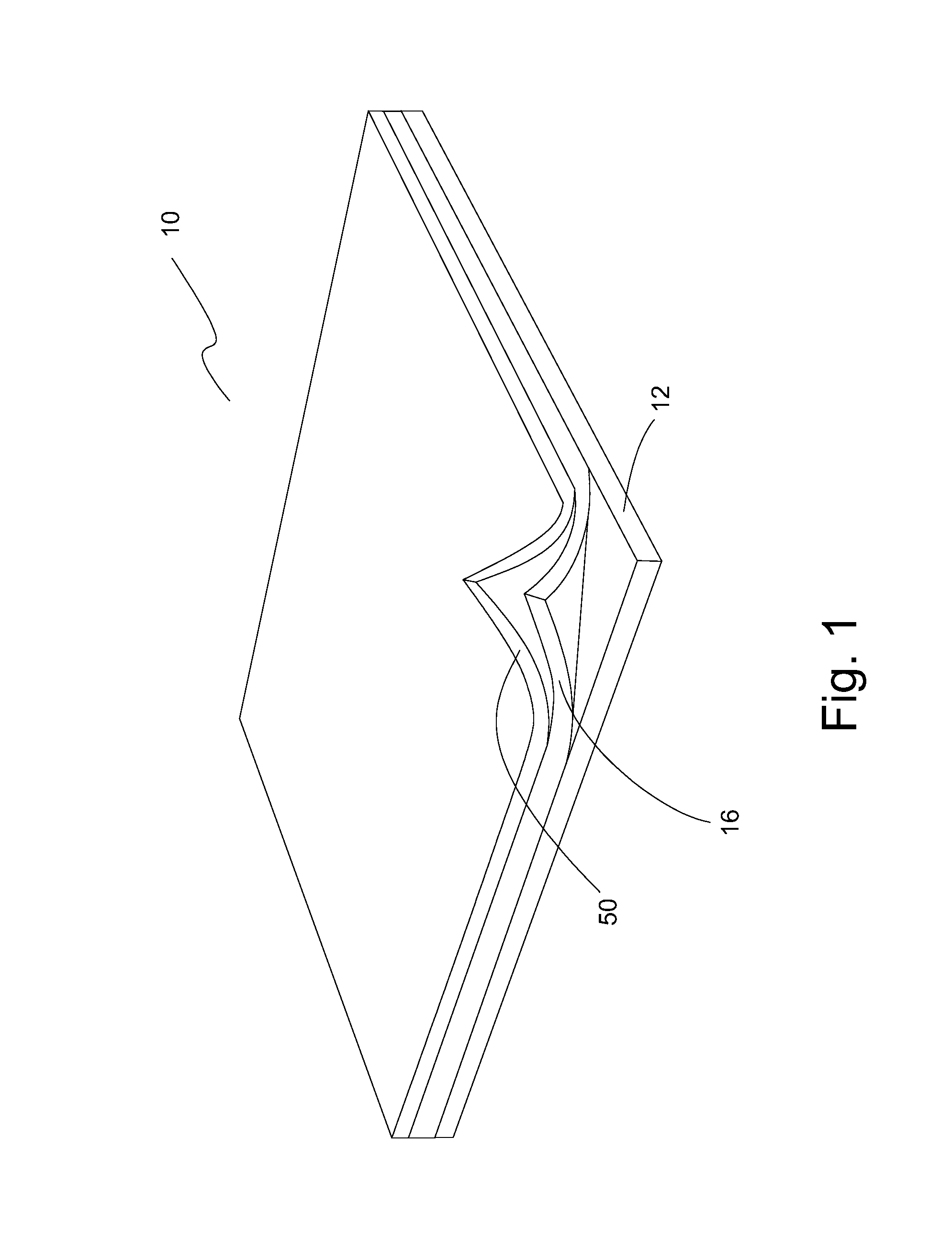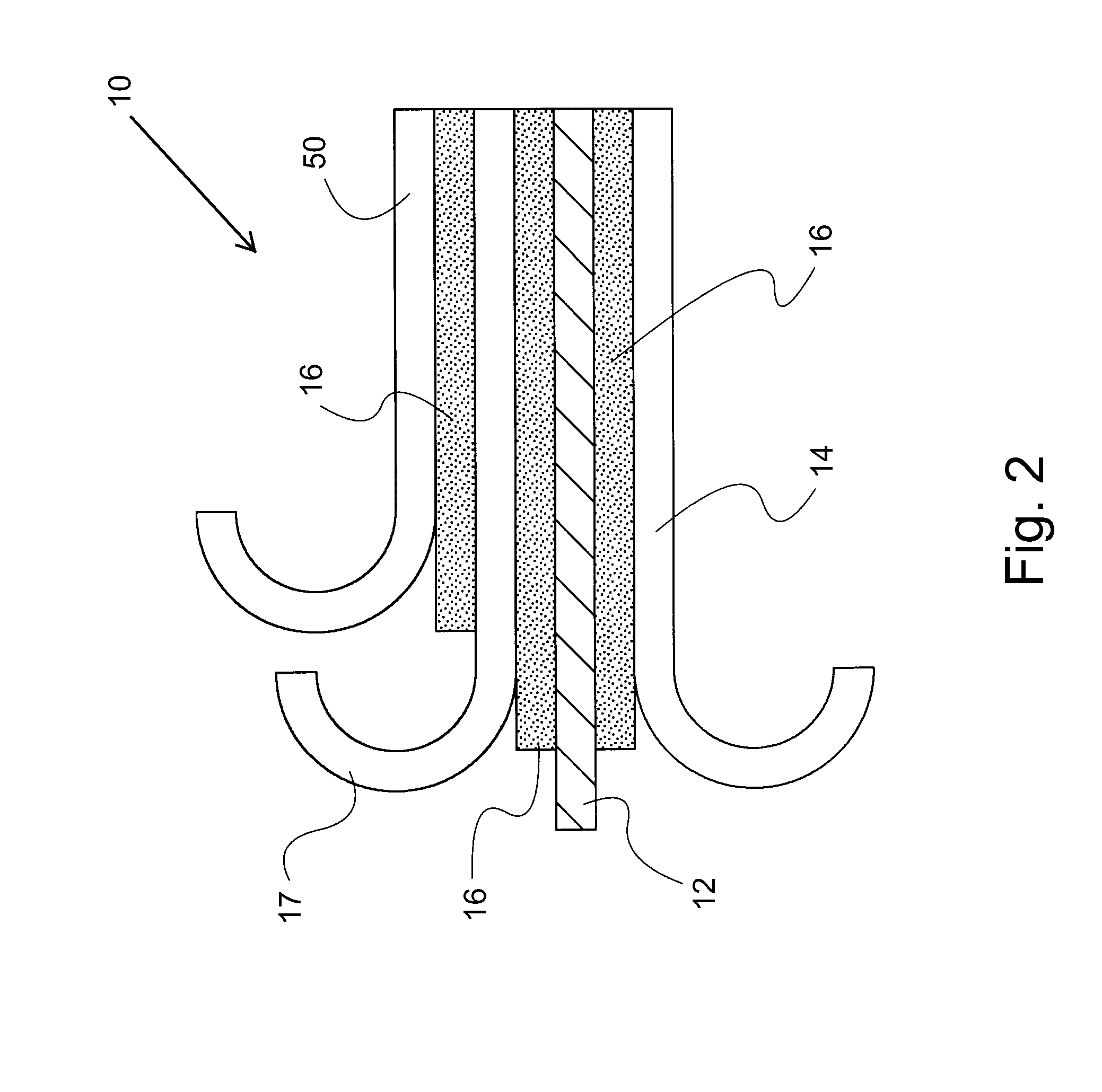Through-wall masonry flashing and drainage device
a drainage device and masonry technology, applied in the direction of layered products, chemistry apparatus and processes, wood layered products, etc., can solve the problems of increasing the risk of damage, thickening and hardening of stainless steel sheets, and flashing devices with thinner copper sheets, etc., to achieve excellent puncture resistance, durability, and longevity.
- Summary
- Abstract
- Description
- Claims
- Application Information
AI Technical Summary
Benefits of technology
Problems solved by technology
Method used
Image
Examples
Embodiment Construction
[0030]FIG. 1 shows one embodiment of a combination through-wall masonry flashing and drainage device 10 that includes a flashing membrane 12 and a wicking cloth 50 affixed to the flashing membrane 12. An optional adhesive 16 is disposed between flashing membrane 12 and wicking cloth 50. For clarity in showing the components of combination flashing and drainage device 10, the corners of adhesive 16 and wicking cloth 50 are shown curled up from flashing membrane 12. Wicking cloth 50 is preferably the top layer of device 10 shown in FIG. 1.
[0031]FIG. 2 shows an alternate embodiment of a combination through-wall masonry flashing and drainage device 10 that includes a flashing membrane 12, a first reinforcing cloth 14 affixed to a first side of flashing membrane 12 with an adhesive 16. A second reinforcing cloth 17 is affixed to a second side of flashing membrane 12 with adhesive 16. A wicking cloth 50 is affixed to second reinforcing cloth 17 with adhesive 16. For the purpose of clarity...
PUM
| Property | Measurement | Unit |
|---|---|---|
| Thickness | aaaaa | aaaaa |
| Thickness | aaaaa | aaaaa |
| Thickness | aaaaa | aaaaa |
Abstract
Description
Claims
Application Information
 Login to View More
Login to View More - Generate Ideas
- Intellectual Property
- Life Sciences
- Materials
- Tech Scout
- Unparalleled Data Quality
- Higher Quality Content
- 60% Fewer Hallucinations
Browse by: Latest US Patents, China's latest patents, Technical Efficacy Thesaurus, Application Domain, Technology Topic, Popular Technical Reports.
© 2025 PatSnap. All rights reserved.Legal|Privacy policy|Modern Slavery Act Transparency Statement|Sitemap|About US| Contact US: help@patsnap.com



